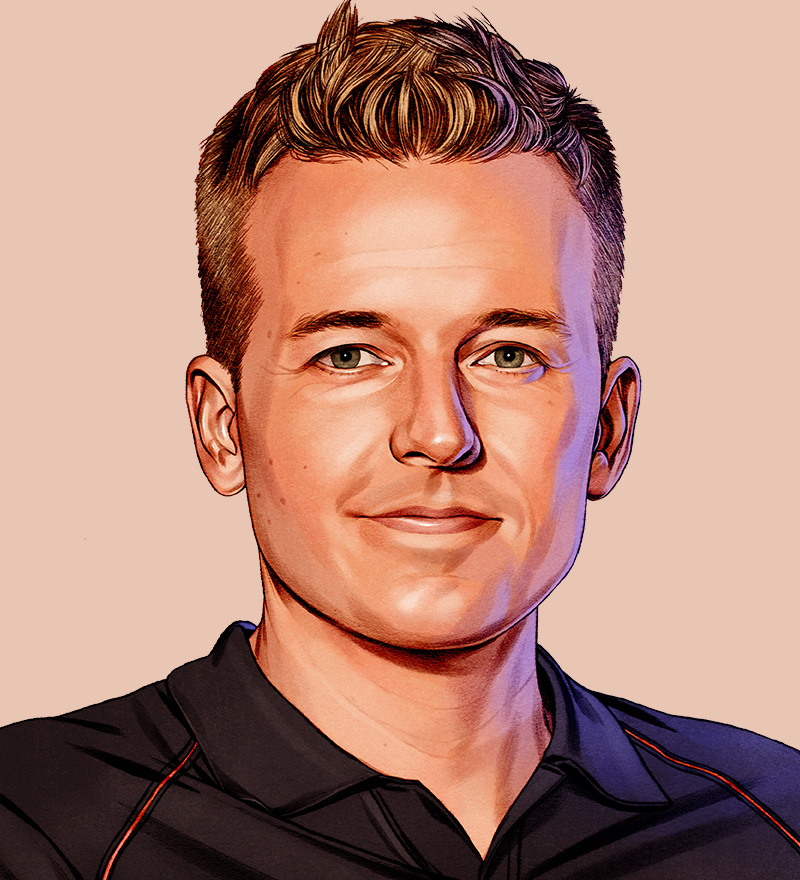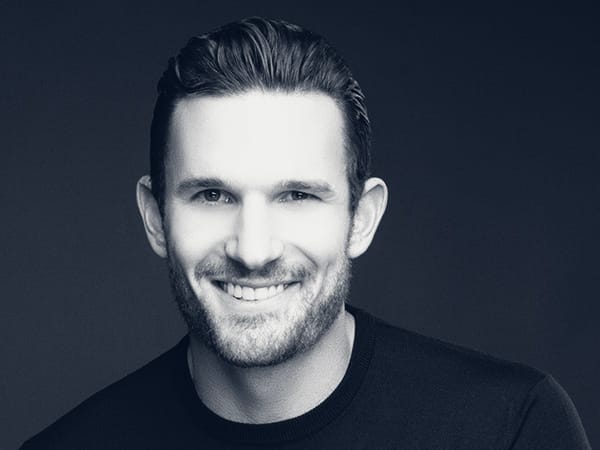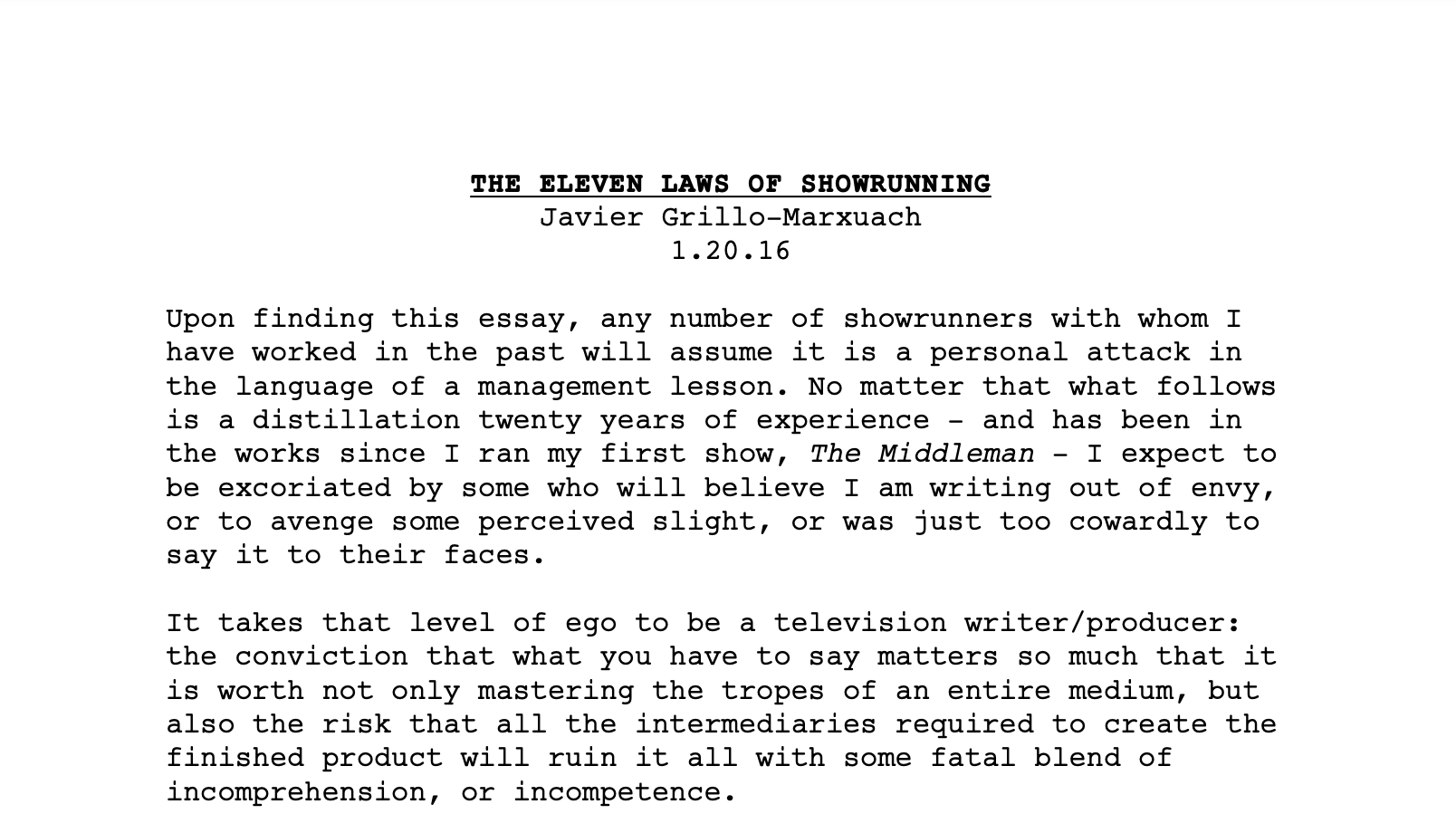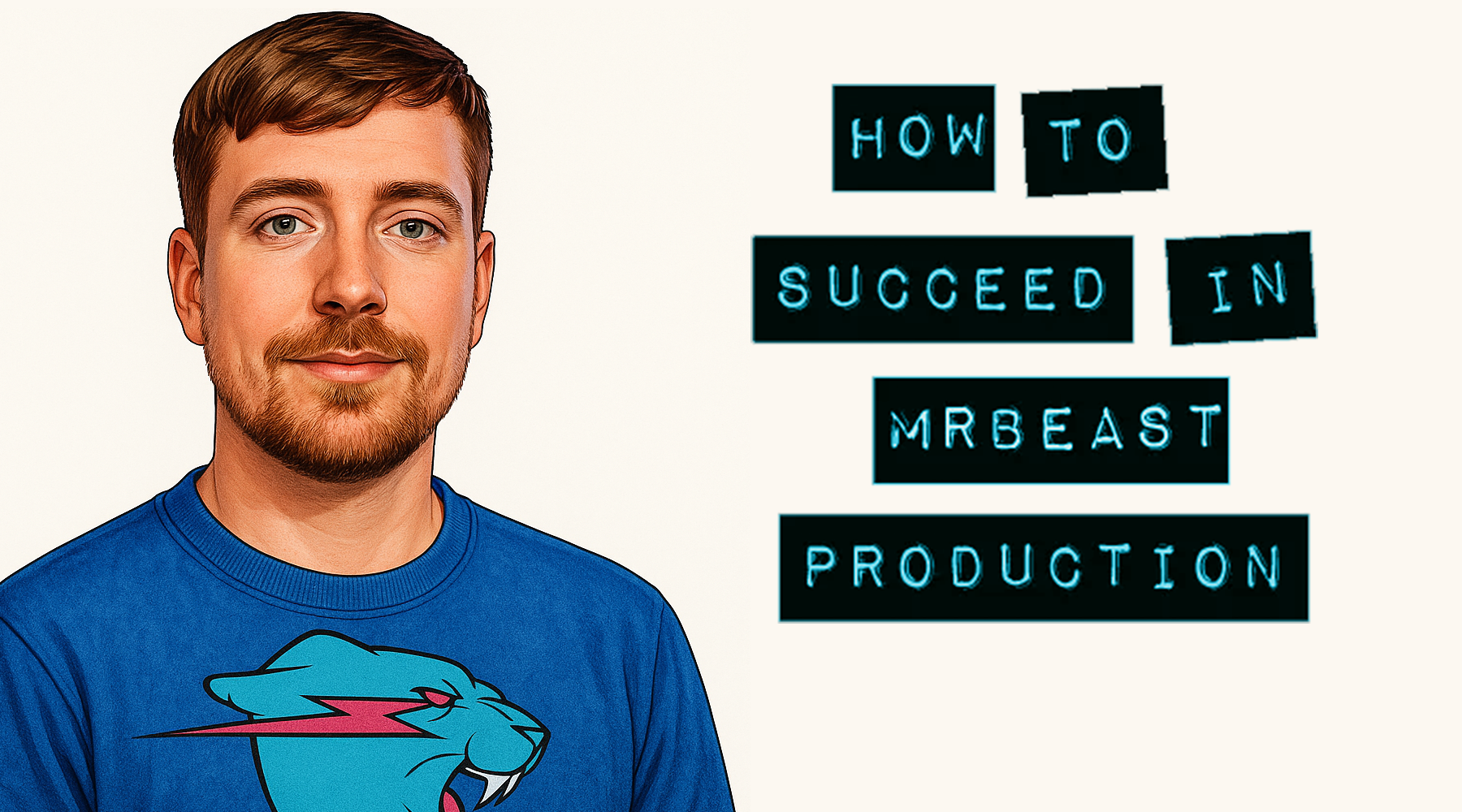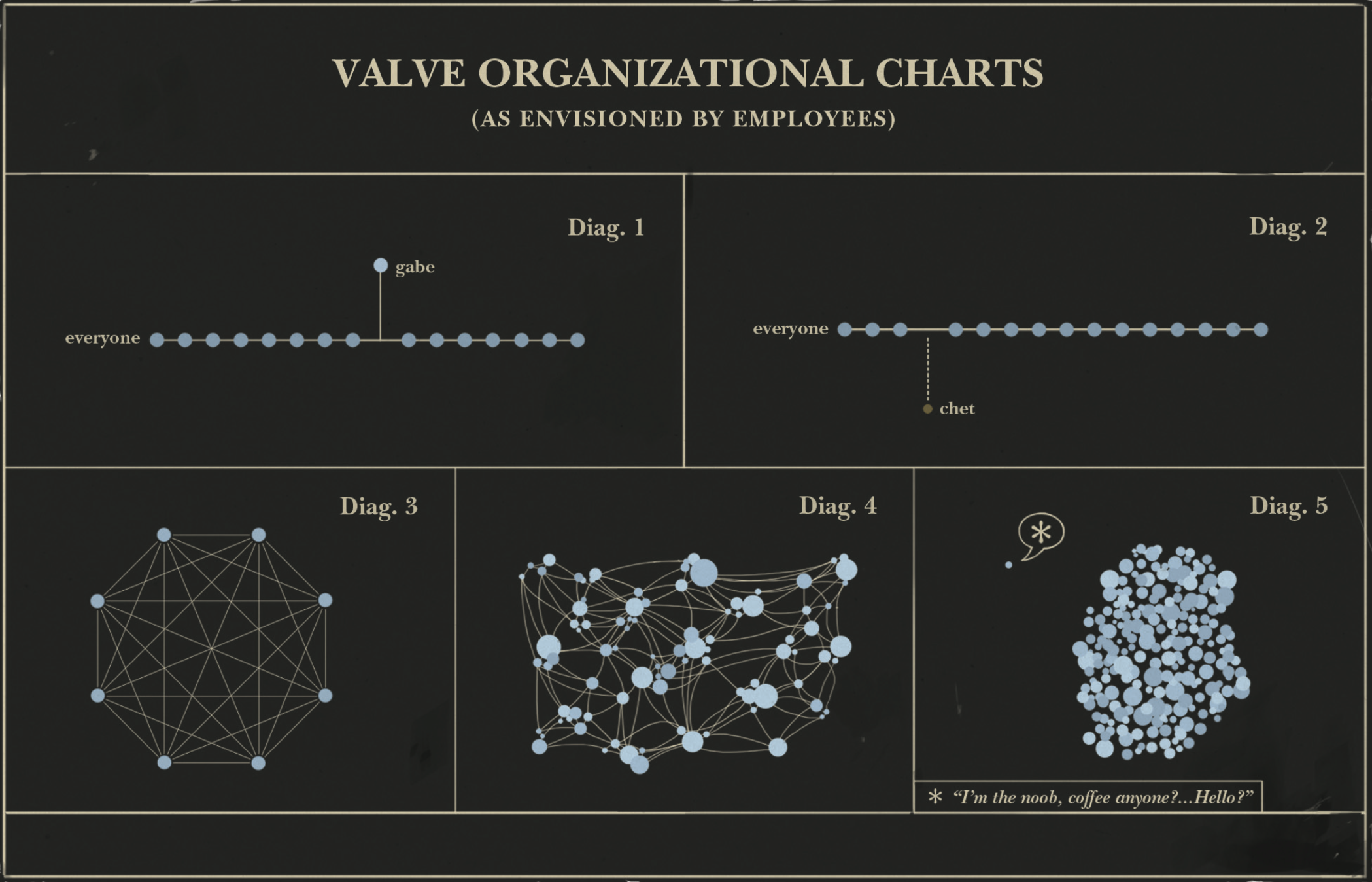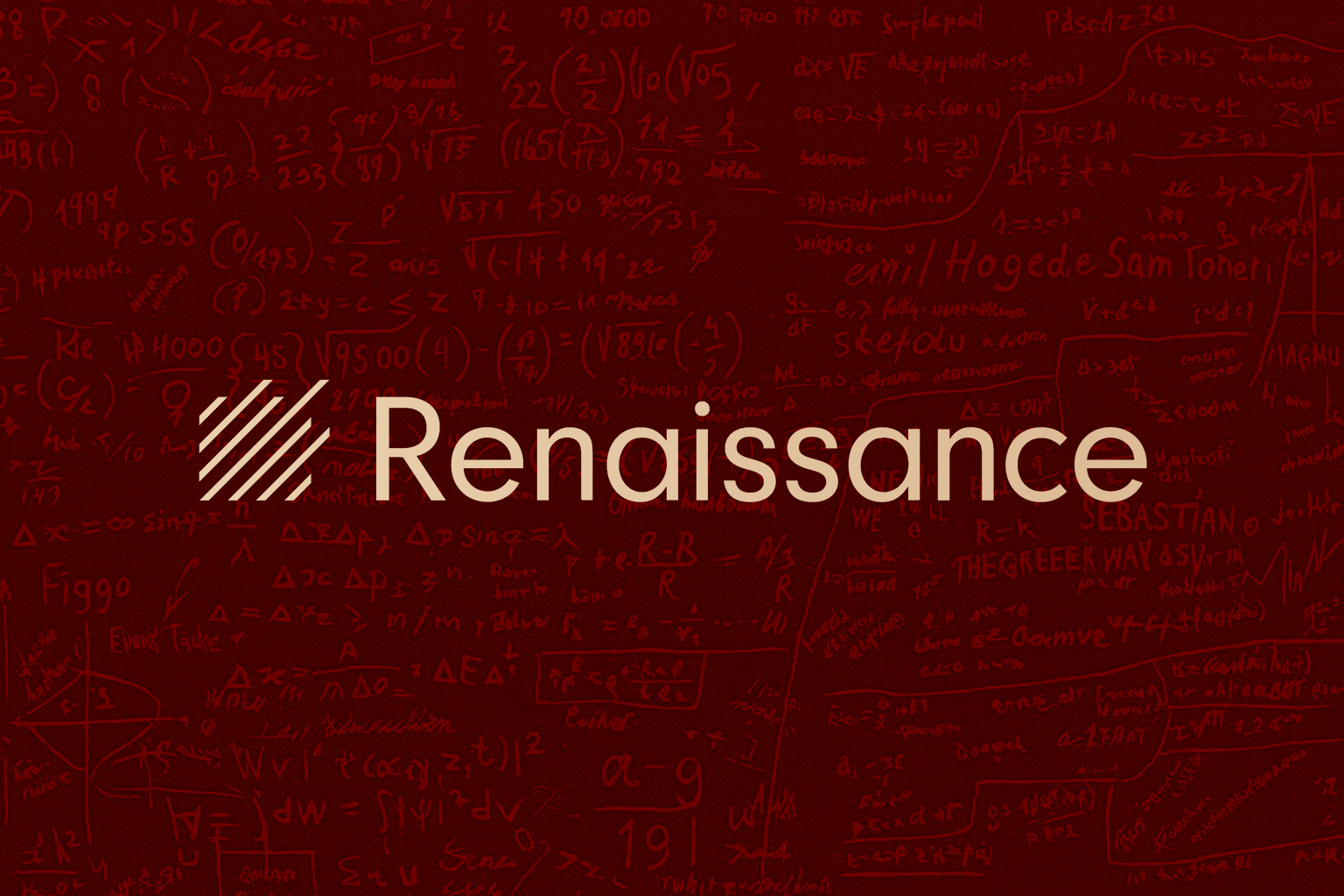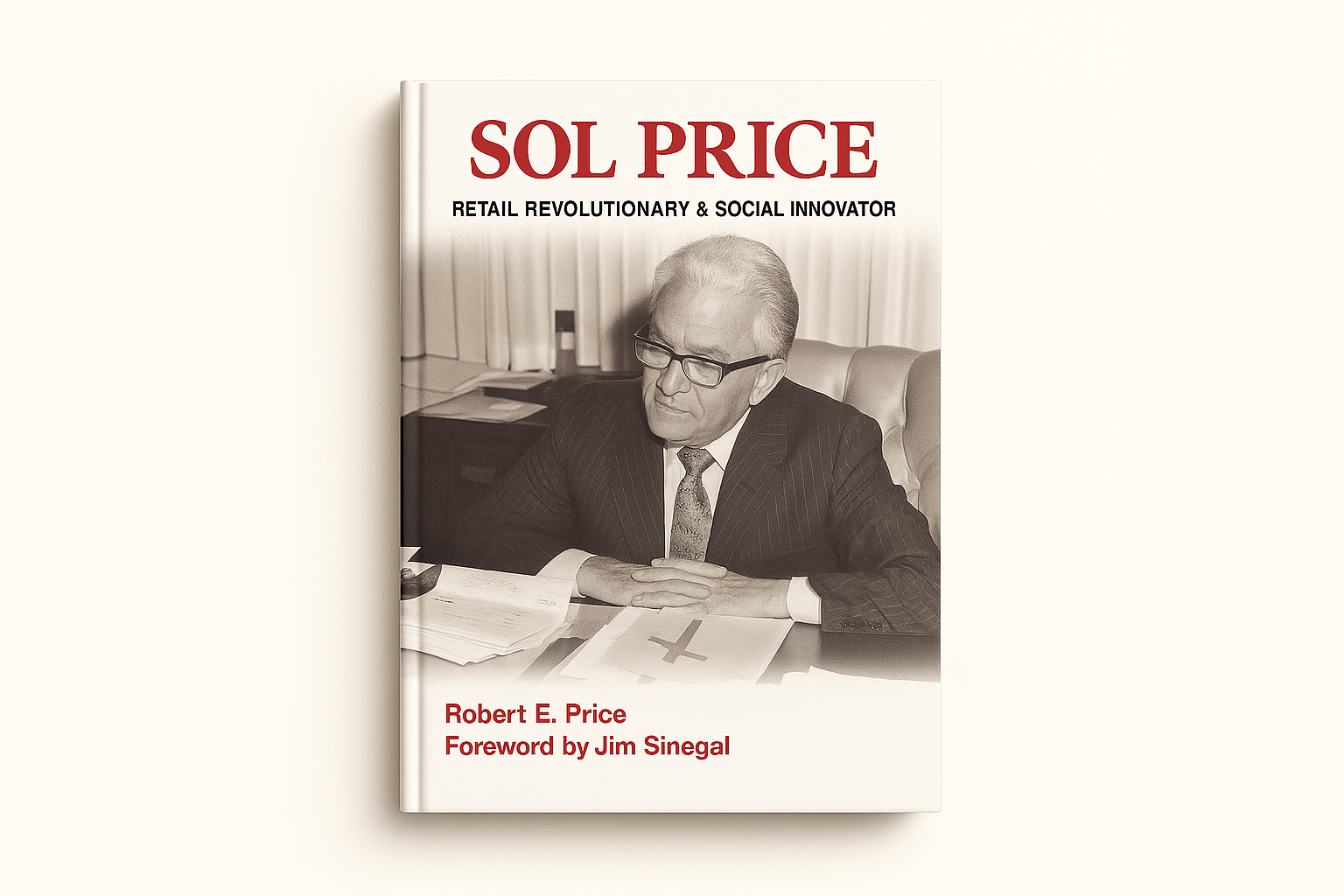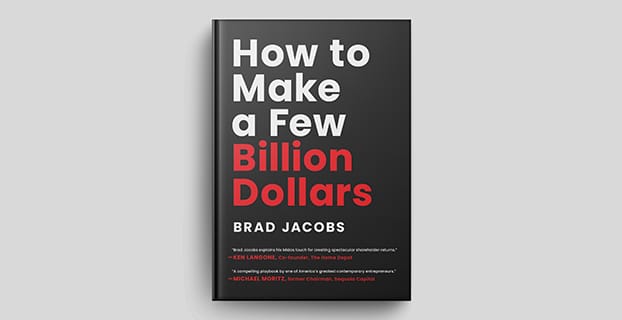“I think every stock that has future growth can be value, and every stock that is value can also be growth. They go together.” – Rennick Palley
Rennick Palley is the Founder and Chief Investment Officer of Stratos Technologies. Prior to founding Stratos, Rennick worked as a Research Associate at Sanders Capital — which manages over $40 billion in global equities. To date, Stratos Technologies has made 16 investments with an aggregate transaction value of over $250 million into companies like Rezi, Tala, Dave, Compound Finance, and Clearbanc.
In Part 1 of this two-part interview, Rennick and I discuss the war of growth vs. value investing, the concept of reflexivity, and Stratos' approach to investing across the capital structure in early-stage technology companies. In Part 2, which will be released next week, we zoom way out to get Rennick's thoughts on everything from the recent boom in SPACs to his interest in DeFi movement and investing in the crypto space.
Chapters
- 00:00:16 – How Rennick got his start at investing
- 00:05:43 – What Rennick learned as a Research Associate at Sanders Capital
- 00:19:23 – The story behind Stratos Technologies
- 00:25:26 – George Soros' concept of Reflexivity (and why it's applicable today)
- 00:30:02 – Why venture backed technology companies are under-levered
Links from the Episode
- Sanders Capital
- Lew Sanders
- AllianceBernstein
- Sanford Bernstein
- Gamestop and its stock frenzy
- Puerto Rican sovereign debt
- The Alchemy of Finance by George Soros
- Airbnb
- Alex Danco’s writing about SaaS lending
- Benedict Evans’ presentation: The End of the Beginning
- Rezi
- YCombinator
Transcript
Daniel Scrivner (00:00:00):
Rennick, I am so excited to have you on the podcast. Honestly, from the moment I met you, I've wanted to have a conversation like this with you. So, thank you so much for your time, and thanks for coming on Outliers.
Rennick Palley (00:00:12):
Thank you so much for having me. I'm really excited, too. Grateful to be here.
Daniel Scrivner (00:00:16):
To set up a little bit of context, and I guess just to give everyone a little bit of a preview, we're going to spend a bunch of time today talking about Stratos Technologies, which is the fund that you've been building, and what you've done so far there and where you're headed.
Daniel Scrivner (00:00:28):
We're also going to talk a lot about, nerd out on investment psychology and philosophy. But what I want to do is just give everyone a little bit of a background on who you are and what you did previous to Stratos. So, where I wanted to start was, I'm always fascinated when I talk to other investors to just get a sense for what made them interested in investing to begin with. So do you mind fleshing that out a little bit, and then we can talk about some of your background?
Rennick Palley (00:00:52):
I started my career in engineering, aerospace engineering, and there was something that occurred to me while I was doing that. And I was in my early 20s at the time. And it was that, the design of aircraft and aerospace generally is determined by physics, and physics don't really change.
Rennick Palley (00:01:13):
And that was interesting because it meant to me that the ability for the industry and the designs themselves to change was limited by physics. And you could only get so perfect for operating an aircraft within the boundaries of our atmosphere and even beyond it. Which isn't to say that we've already gotten there, by any means. And obviously there's a lot of interesting stuff happening in aerospace today.
Rennick Palley (00:01:41):
But it made me wonder, was there somewhere else that I could go that was going to have a little bit of a changing landscape, a field that was changing underneath you as things happened? And it made me look into investing because that had always been an area that seemed to me was driven by people, and people are emotional creatures. And as a result of that, they do things that may not be rational. And in comparison to physics, everything is perfectly rational and deterministic.
Rennick Palley (00:02:18):
So, I started going in that direction, and then found it to be very interesting. And the depth to pretty much anything that you could look at, and try and understand in investing ended up getting to a point where there was math that could define it. But then, there was also psychology, and then philosophy on top of that. And so, to me that seemed like an area that had sufficient depth that was going to keep me interested for a really long time.
Daniel Scrivner (00:02:46):
I love that part of your background is clearly so engineering and physics heavy. And I'm curious, when you think about investing, how much of that to you is hard science versus something that's more like art, and how do you think about that balance?
Rennick Palley (00:02:59):
I think it's both blended together. And the table stakes are the math components. So, it has to make sense that a business is going to at some point generate cash flows that are going to be discounted back to today. And therefore, that will create that value today, that market cap of that business, or however you're looking at that particular asset.
Rennick Palley (00:03:23):
But at the same time, the way in which those cash flows are generated and when they actually occur is more of the art component. But then there's the philosophy component, which is, "Okay, well, how is the rest of the world going to value those cash flows in the context of everything else that's going on? And how much of that actually has to be rooted in reality, and something that actually ends up happening, and how much of it is just based upon people's perception of what is likely to happen?"
Rennick Palley (00:03:55):
And it leads me to think about what's going on in the market today, which is a lot of investors who have a particular viewpoint and framework for understanding value are perplexed by what's going on in the market. And maybe we should talk about that a little bit more later. But things go through phases in terms of how people think about investments.
Rennick Palley (00:04:21):
And if you were to look at, let's say, the way that US equities were valued over the last 10 or 20 years, and you said, "How much of a company's valuation at one point, time zero, was actually justified by what occurred by T plus five years?" And you probably would find that there was a huge amount of noise and error there. But at time zero, that is still what the company was being valued at by the market, and you could transact at that price.
Rennick Palley (00:04:54):
And so, it leads me to say that so much of that, you could have justified what you were paying on that day based on math. But ultimately, it ended up being something much closer to philosophy in that you would ask, "What was it that was driving me to decide that?" And there was no math that could have justified it, in retrospect.
Daniel Scrivner (00:05:16):
I love that. And part of how I've been thinking about that, and we'll definitely put a pin in this and come back to it. But I think how people think about time, and what I mean by that is I think value investors are very much in the moment. They expect all valuations to be in lock step with where the business is in that moment. And I think growth investors, and particularly the newest generation of growth investors, I think their minds tend to think directionally. I think because of that, we have very different views of the world.
Daniel Scrivner (00:05:43):
We talked about a little bit of that background. I'd love to talk about what you did right before starting Stratos, which was, you spent a bit of time at Sanders Capital, which I know is much broader than what you're focused on now. Can you talk a little bit about that experience, and how that influenced how you approached Stratos?
Rennick Palley (00:05:59):
I was incredibly fortunate to get that job. I was hired by Lew Sanders, who was the CEO and chairman of AllianceBernstein, and one of the early guys at Sanford Bernstein. And so, he had developed what we think of today as modern equity research, where you're writing hundred page research reports and it's very in-depth, fundamental research.
Rennick Palley (00:06:24):
And so, he hired me out of grad school, and I got to learn how to invest directly from him and the rest of the people on the team. And it gave me a great opportunity to look at the world from a 30,000 foot view. So, I got to look at a lot of different industries, a lot of different countries that were engaged in various forms of industry. And then companies themselves within those verticals. And it gave me the chance to understand what one of the preeminent value investors thought about the world, particularly in terms of Lew's investment framework, and how he thought about computing expected returns, and how to really do good research.
Rennick Palley (00:07:12):
But then also, it gave me a sense for where the world was going by having seen so many different verticals. And it gave me the chance to decide where I wanted to really focus from there. And I looked at the world and thought, " We're in a state of low secular growth that's probably going to be the case for a long time. I'm not really one for making macro bets, but I'll guess that based on the data we have available, that's likely to continue to be the case. And that a lot of the growth in the world, or the most interesting things happening and value being created was coming out of the tech world."
Rennick Palley (00:07:50):
So I thought, "Okay, I want to look at that. I want to really make a bet and get involved in that space." And on top of that, there seemed like the tide was going out in public markets investing. The simple fact is that you have a benchmark that you're compared to, and that benchmark costs basically asymptotically close to zero to invest in.
Rennick Palley (00:08:11):
And so, in order to justify your existence as a public markets investor, you have to beat it. And we started looking at private deals together, and that was really our start to begin investing in the private markets and in tech.
Daniel Scrivner (00:08:25):
And I have to ask just two somewhat nerdy questions about your time at Sanders Capital. And that is, I'd be curious if you can share maybe one or two investments or companies that you found particularly interesting, just so we get a sense for maybe what you were looking at when you were there.
Daniel Scrivner (00:08:41):
And then the second one is, something that when I think about my own career in the design space, in the initial portion of my career, I was lucky enough to work at Apple early on, which in my mind was very much like a bootcamp. It taught me a lot of good discipline, and how to avoid some of the pitfalls of the creative process.
Daniel Scrivner (00:08:57):
And it seems to me that you having this experience at Sanders Capital likely maybe served a similar role. You talked about the hundred page investment memo. Were there other things you learned from a money management or trade discipline perspective while you were there?
Rennick Palley (00:09:10):
Probably the best thing I can say about what I learned at Sanders is, there are things that I am encountering today as someone who runs a business, but also as an investor, that I look back and think about Sanders and think, "Oh, now I understand why he did things that way, or why he was thinking about it."
Rennick Palley (00:09:29):
So there were things that weren't obvious to me given my experience, or just the amount of responsibility I had when I was there that were actually incredibly thoughtful, and I would say simple, but you could have only learned or appreciated once you yourself were managing a portfolio or running a business. And so, I think that goes to say a lot about Lew having been around the block many times and being really, really good at what he does.
Rennick Palley (00:09:56):
In terms of what I got from it. So there wasn't really a training program at Sanders. I just kind of got there and just sat in the seat. That was it. It was really working with Lew and the rest of the team directly. And I remember the first time I ever did a, we called them research reviews. So we would look at a company, and I would spend a couple weeks understanding as much about it as I was able to and was available in the public markets, and talking to management, and talking to experts. And oftentimes going to the actual company and checking out their plant equipment and the like. And understanding competitors, and all of that stuff that's common in equity research.
Rennick Palley (00:10:38):
And then I'd build a model that articulated my view of the future for that business. And then I would sit down with Lew and the co-CIO, John, and walk them through what I thought was going to happen and my analysis of where the company was, and how they got there, and where they were going.
Rennick Palley (00:10:53):
And I remember the first time, it was a bloodbath. It was terrible, because the number of companies that those guys have seen in their career is just staggering. That was painful, but that was a great way to learn. That was like trial by fire. That was the best way for me to figure out how those guys thought. And so, then fast forward a few years after having been there, I would anticipate what they would be thinking when I was thinking about a business and trying to put things together. And so, that ended up being the basis or the foundation of then my investment philosophy as I had continued at Sanders and brought ideas to them. But then also after I'd left and investing Stratos, investing my personal account, et cetera.
Rennick Palley (00:11:37):
To answer your question about what were some of the things that I did there. Well, one that's particularly timely right now was a short position that we had, was not my idea, but it was the most perfect short. It was an industry in secular decline that was the high cost producer. If you had done the research and you had determined what the cost curve was for global production, they were surely just uneconomical to produce their commodity at the prices they were producing it on that day.
Rennick Palley (00:12:10):
And in addition to that, in a very highly levered, high fixed cost industry. It was just a perfect short. And so, we had the short position. And it was on for a year, and then Donald Trump got elected and he basically said, "Hey, all of the imports that are, quote unquote, dumping," this commodity was uncoated freesheet paper, 8 1/2 x 11 printer paper that obviously people are using a lot less of, "you guys can't do that anymore. We're going to slap a hundred dollars tariff on top of it." And so then the stock popped, and it had nothing to do with the financials or the fundamentals.
Rennick Palley (00:12:49):
The probability distribution of outcomes in any investment is one of the most important things to think about that I think is not thought of. Because outcomes are probabilistic, and oftentimes, people will think that one outcome that describes the full potential range well, but of course it doesn't. You can't rerun the future a million times to understand what the true probability distribution is.
Rennick Palley (00:13:17):
But if you're thinking about shorting, the best you can do is you can double your money by the stock going to zero, or you could potentially be liable for 10 X your investment. GameStop is the perfect example. Especially if you're levered, if you have options or something else with inherent leverage. Thinking about that statement in the context of value and growth, it's sort of the same thing.
Rennick Palley (00:13:45):
If you're buying a stock that is cheap, and it's cheap because the market has some anxiety about its future earnings potential, and let's say it's down 50% from the 52 week high. Well, the best you can possibly do is maybe double your money. That sounds like a lot. It is. I'm not going to downplay a double. But think about, you have to be right to get that two X. And we'll hold aside whether it's easier or harder to be right in value versus growth.
Rennick Palley (00:14:15):
But now let's look at growth. If you're right in a growth investment, you can make 10 X, you could make a hundred X. People would say, "Well, that's so uncommon to see a business that grows that way." And that might be true. I think that it's becoming more common today than it had been, and I think that's a whole other discussion. But think about how less frequently you need to be right to offset those times when maybe you're not right. When you are correct in a company that has a potential to scale significantly, you could make one bet.
Rennick Palley (00:14:48):
And that's basically venture right there. Part of a large aspect of the venture mentality is that. Whereas in value, you're looking for something that is the cigar butt, so to speak, which is something that we should talk about. But I also don't really like the growth versus value characterization, it's what's common today. But I think every stock that has future growth can be value, and every stock that is value can also be growth. They go together. But I guess it's just something, people like to think in headlines. So that's the headline value versus growth.
Daniel Scrivner (00:15:24):
Well, and people like to think in terms of black versus white, or one side versus the other. They like to take something and split it into two opposing sides. I think there's also a tremendous amount of opportunity that lies at the intersection of value and growth, where you have a growth investment that if you are right about your model of the future, it is extremely cheap today. And it could be cheap on a relative basis, it could be cheap on an absolute basis. But I see some of those opportunities, and I feel like that just debunks the whole myth of one side versus the other pretty squarely.
Rennick Palley (00:15:53):
That's exactly it. Its value is in the eye of the beholder, so to speak. And it's not a statistical metric of, is this 15 times earnings or below? Which is the classic statistical value threshold for what's cheap and what's not.
Rennick Palley (00:16:10):
But I think what you just said, is my model of the world accurate for what's going to happen here? I think there's a lot of really interesting things going on in the world today that is making people reevaluate what model to use to try and determine that. It comes down to one piece of math that explains something that's a lot bigger. But to simplify it, it's, "What is my transition matrix of growth?" Which is to say like, how quickly does the growth of a company decay over time? So, if you were to look at every business pre-FANG, let's say, in the history of the world, it would generally look the same.
Rennick Palley (00:16:54):
You couldn't expect a company to compound at 30% per year for 10 years or 20 years, or a higher compounded number than that, because it just wasn't possible. You were dealing with, they are the limitations that are prevalent in the physical world. And every business existed in the physical world. Okay, now you've got FANG, Facebook, Apple's kind of in the middle. But Facebook, Google are the two prototypical examples of this, where you have a business that has zero marginal cost and unlimited scale, until you've saturated every person on earth, and then you've got to figure out the next thing to do.
Rennick Palley (00:17:29):
But before that, realistically there was really no business other than maybe, I don't know, Coca-Cola that could serve every human on earth. And so, they would just hit these walls, and so they would stop growing. And then management would go and do something stupid to try and juice the stock or whatever.
Rennick Palley (00:17:46):
And that's why you couldn't ascribe the same kind of valuation multiple to those businesses then as you can now. And I'm not saying that, "Oh, well, the sky's the limit. You could pay anything." That's not true. But if you look at a company and you say, "I think this thing's going to compound for 50% per year for 10 years," you're looking at an exponential curve that's very hard to overpay for.
Rennick Palley (00:18:07):
Now, again, this is like blasphemy in the church of value that I'd even say something like that, especially given that I started my career as a value investor. And you have to find some way to mathematically rationalize that. I don't think that you can just pay any price and hope that it works out. And we can talk about my approach for doing that. But I think it's a really interesting world we're entering, and I think there are going to be more and more businesses that look like that.
Daniel Scrivner (00:18:32):
I couldn't agree more. I love that this goes back and mimics the beginning of your career of being in a space so that what you could do is limited by the physical environment, by the laws of physics, and wanting to do something else.
Daniel Scrivner (00:18:43):
But what I also love is, I think my favorite types of investors are people like you that are fundamentally growth investors, meaning that they're looking at businesses that are disrupting something that's happening in the world, are going into industries that haven't been touched in a long time, or are just building something that inherently has massive, massive scale.
Daniel Scrivner (00:19:01):
But they don't just yolo it into the stock and buy at any multiple. They're doing this really difficult thing, which is in their mind, they're both balancing this extreme sense of optimism, and an idea about how this scaling can happen over time, while at the same time knowing that a business is only worth so much. And you have to keep both of those in mind, because I feel like they're both good tethers to just keep you in the world of reality.
Daniel Scrivner (00:19:23):
I'd love to transition a little bit and talk about Stratos. To set up a little bit of your background, we've talked a little bit about some of the philosophies that shape it. Can you just start by, I guess, sharing the initial idea, or the initial insight that led to Stratos, and describe a little bit about how that started as?
Rennick Palley (00:19:40):
We were seeing opportunities in the private market that generated mid-teens current cash yield. And looking at those opportunities, they were typically debt deals. And comparing it to the expected return of a lot of opportunities in the public markets, both debt and equity, and thinking, "What kind of risks would I have to take to earn 13% current yield in the public market if it even existed, and something with a CUSIP?"
Rennick Palley (00:20:10):
And I was at the time looking at Puerto Rican sovereign debt and thought, "Hmm, which bet do I like more? I like these things we're seeing in the tech space all day. And there's no volatility, and it has a finite term, and it's monthly cash pay. This is more attractive." That was juxtaposed with thinking what I had said before about tech being interesting and private markets being interesting, but thinking venture is really competitive.
Rennick Palley (00:20:37):
Venture is really competitive because only a small number of people can get into any given deal, a small number of funds or investors. And it's really hard to even see the best deals. And there's a lot of venture funds. And so, how do you differentiate? It's not like the public markets where you can just go out and participate in the market at that price.
Rennick Palley (00:20:58):
This was in 2014. So I guess by that measure, venture has gotten a lot more competitive.
Daniel Scrivner (00:21:02):
Just to underscore a few things there. You're investing in basically venture capital backed businesses, but you're investing on the debt side?
Rennick Palley (00:21:10):
Correct. It's a good question because I think a lot of people's immediate reaction to that would be, "Wow, that sounds kind of risky." Maybe someone who was more cynical would say, "So, you're basically taking venture equity risk for capped upside?" To go back to what we were just talking about a few minutes ago in terms of what the probability distribution of returns is for any given investment.
Rennick Palley (00:21:33):
But I think that what we were able to figure out was how you could structure the deals in such a way where you weren't actually taking venture risk. You're actually exposing yourself directly to the risk of the underlying assets, the collateral that you're lending against. Some of those structures were not really a new thing. It's taking a book out of securitization, finance and structured credit of various kinds. But I think we were pretty early in applying it to venture.
Rennick Palley (00:22:06):
What that ended up doing for us is it started to get us deal flow that we didn't really deserve, to be honest, because there weren't a lot of other people doing what we were doing. There were a number of companies now that are unicorns, that needed that kind of financing early on.
Rennick Palley (00:22:24):
Fast forward to where we are today, we're still doing that. We're still providing credit facilities, and we have a dedicated fund for that. We're trying to always be on the limit of how can we creatively do this and provide this form of capital that's non-equity capital, that's scalable, to help our underlying portfolio companies scale in a way that is more equity-efficient?
Rennick Palley (00:22:51):
The other thing that's really important about that is, there's a lot of reflexivity in venture and tech, based on what we were talking about a few minutes ago. If you see a company that's scaling and it looks like it's really capturing a market, even if it's early on, you're going to be able to raise a lot of money from great investors, which ends up creating this reflexivity, because then what happens? If you can raise money at a good valuation, you can then get great talent. And then when you get great talent, people start to know about you.
Rennick Palley (00:23:27):
When people start to know about you, the clients come to you, "Oh, I heard about you." Or, "Oh, you look legitimate. You have these great venture investors." Even more so. So, the flywheel starts to drive itself. Then, taking a step back and asking, "How do you get there?" It's, how do you set up the capital structure from day one to enable that? And some people might say, "Okay, well, the thing to do is just raise equity, use equity to finance your early assets and go from there."
Rennick Palley (00:23:465):
And sometimes that's the right answer. But other times the right answer is, well, actually you can use some other form of financing that isn't linked to the equity or is less directly linked to the equity than a SAFE note or a preferred equity investment that can help drive that scale earlier on in the life cycle of the company, which then drives this reflexivity that we were just talking about.
Daniel Scrivner (00:24:18):
I just want to pause really quickly and define, or kind of talk about that term reflexivity. And I'll just start first. But the reason I wanted to pause is, I've been geeking out on that recently over the last couple of months, and the book that I found that I ended up reading is George Soros' The Alchemy of Finance, which is all about it. Is that how you found it? I guess, any thoughts to share about reflexivity as a principle?
Rennick Palley (00:24:38):
That is definitely something that I've stolen fully from George Soros, but used in a different context. His was talking about how markets behave and people follow other people and look at one outcome as something that is likely to predict future outcomes in an auto correlated way, and that they move in the same direction.
Rennick Palley (00:24:59):
I'm using it in the sense of venture, as I just described, where a company that has a lot of momentum is able to reinforce its momentum by the fact that it has the momentum in and of itself.
Daniel Scrivner (00:25:12):
And it seems like a core... I mean, just as you were saying that, I just suddenly had this a-ha moment that it seems like reflexivity is really built into the idea of growth investing, where it is rather than everything being completely rational... And maybe just to stop there for a second, rewind a second.
Daniel Scrivner (00:25:26):
What I found so interesting about reflexivity is it is just a really simple but powerful philosophical concept to try to answer. When you look at something in the world and you try to dig into the underlying facts, but they don't completely support what this thing is trading at or how it's being viewed in the world, a lot of times the reflectivity is at play. And it's just this idea that if we were taking an investing example, yes, the fundamentals of a business drive the outcome.
Daniel Scrivner (00:25:49):
But as we see all over the place in the market today, whether it's a spec or it's a recent IPO, or it's Airbnb being worth a hundred plus billion dollars, there's reflexivity in play. Am I getting that right? And is reflexivity kind of a mental tool in your toolkit as you think about growth investing?
Rennick Palley (00:26:05):
It absolutely is. I think it's something that is easy to overweight, but I think it's really important to be aware of. And I've seen it happen many times where a company has evaluation that's nearly impossible to justify at the early stage, but then it goes on and justifies it in your face. And I think if you passed, but it comes back again to probability distribution of outcomes.
Rennick Palley (00:26:29):
Let's assume you have a portfolio and you have 10 companies in it. And those 10 companies all are at the very early stage of having a marketplace flywheel, where they're creating value by making a market for customers and suppliers of various kinds. And you see that the value proposition on both sides is really strong. It's just happening. It's like a tadpole. It's not really there yet, but it's just starting. How much is that worth? Well, it's really hard to say because do you know what's going to actually succeed? No, there's a lot of execution risk. The market could go away and it could become irrelevant by the time it can really get to scale.
Rennick Palley (00:27:12):
But if you make that bet, 10 times out of 10, the times that it works out are going to pay you back 10 fold on that front. And so, you have to make that bet because of that. It's the reflexivity that drives it from that point, and you have to see it happening right at the start. Otherwise, it's really hard to catch it from there.
Daniel Scrivner (00:27:35):
What's, I think, powerful about reflexivity and why I think it relates a lot to this notion or philosophy of growth investing is when reflexivity is at play, meaning you're looking at a company and its valuation is insane, it's detached from the underlying fundamentals in the business. If you're taking a growth lens to it, you're not going to necessarily say no to investing because you know that you can, I guess, back into a little bit of why is it valued at that? What does that mean for future evaluations? It's almost like you've driven a wedge in between fundamentals and value, and that can be supported over time.
Daniel Scrivner (00:28:04):
And then as an add-value investor, you're going to look at that and you're going to think, "Oh, that's really expensive," and you're not going to invest and you're never going to have another point to enter because that gaps are likely to always exist.
Daniel Scrivner (00:28:12):
One thing I want to just ask as a follow-up question to the kind of first fund you guys had is, did you find that you had to... when entrepreneurs would come to you and you would be talking about providing them with kind of that venture capital, where there people that were scratching their heads thinking, "Well, I've never thought about taking debt before. How much did you have to help teach people about the role that debt can play in their business in lieu of equity?"
Rennick Palley (00:28:35):
It varied by the company. And one thing that we really learned was to make sure that we were partnering with founders who really got that, because if they didn't, it meant that the value of the relationship and what we could ultimately create together was more limited.
Rennick Palley (00:28:56):
It was something that we're in the process of doing, actually. We have a blog post series that's about to come out that really talks about all of these things to help tell that story on a broader scale. I think the idea of trying to save dilution is something that people generally understand. I think it's the reflexivity aspect of it that I think could be told in a way that resonates more with founders, because I think they get it.
Rennick Palley (00:29:22):
When they get a term sheet from a top-tier VC, they get what that means. It's the same money, but it's the signaling to the market and the rest of the things that it drives. Well, what if they can, when it's time to go raise a series A or B or C, they can be two or three X further ahead in terms of where they are? Well, what kind of reflexivity does that create?
Rennick Palley (00:29:46):
That's one of the things that I think I'm most excited to tell, and also to figure out at scale how we can apply it to a number of different industries, which we've already begun to do. It'd be happy to talk about that.
Daniel Scrivner (00:30:02):
I want to talk a little bit about capital structure. And you said a statement to me that literally the moment you finished saying it, it's just been echoing in my mind ever since then. It's a really simple, short statement, but I think it's really profound and it's just that, "Venture-backed tech is under-levered." Can you talk a little bit about kind of capital structure and how to think about private leverage versus public leverage and that opportunity?
Rennick Palley (00:30:25):
I think you have to start with the prototypical venture-backed company today and ask yourself, "What does capital structure look like?" It's SaaS, B2B SaaS, is the prototypical venture backed business. And it's almost all equity. Sometimes we'll raise some venture debt from SVB or something like that. But for the most part, it's all equity.
Rennick Palley (00:30:49):
But you can look at LBO, SaaS businesses that have been bought by private equity firms or being acquired or whatever. And they hold a lot of debt. I'm not necessarily saying that levering up in that way is the right thing to do that. That's not what I'm trying to say here at all. What I'm trying to say is that even a business that doesn't generate profits has assets that are highly leverageable. And at the most basic level, it's their customers, and those customers produce contracts, but it's really the customers that is the atomic unit, and then you build out from there.
Rennick Palley (00:31:28):
If you have customers, you get contracts. If you get contracts, you have receivables. If you have receivables, then you have cashflow that you can leverage. And so, there's a question, "Well, what are the true unit economics of the business?" And that really is the whole foundation, in my opinion, of how you think about businesses today and growth businesses. And how do you see something that A, B, on the P&L today doesn't generate profits, but has tremendous future earnings potential. It's, what is the atomic unit in terms of unit economics, customer level, unit economics? And if the company produces enough of those, where is it in the future?
Rennick Palley (00:32:04):
But to digress on that point and talk about capital structure, I think that there are a couple of factors that drive these businesses being under levered. A lot of it has to do with investor psychology, which is: there is a statistical truth about what will occur with an investment, whether it's equity or debt or anything else. And then there's the perception of what is likely to occur.
Rennick Palley (00:32:32):
And oftentimes, those things can diverge when the world is moving quickly or where things have changed from what would have been expected in the past. I think that is an example of venture-backed businesses, where there's an expectation that a lot will fail. There's still fear about the prior tech bubble in the early 2000s. There's also just, in some cases, a lack of understanding around what unit economics really mean for a business. There is just not as much interest in lending to venture-backed businesses in ways other than one where someone will come in and say, "Okay, you just raised $10 million of equity. I'll give you three million of debt."
Rennick Palley (00:33:16):
And the reality is that these businesses do stand on their own, and I'd like to make the point that it's probably the case that a higher percentage of venture-backed businesses will have some positive outcome than if you were to take 20 years of data and identify how many of them were zeros. I think it's different now. I think it's different now because it takes a lot less money to start a business, and you can generate profits or at least positive cashflow, way earlier on in the life cycle of the business.
Rennick Palley (00:33:49):
When you have cashflow, even if you don't have profits, you have a lot more optionality around what you do, where you take the business, and how you spend those cash flows to either grow or, if you realize that you're not creating value, you can do other things. Whereas if you're not generating any cash flow or any revenue or any gross profits, you're entirely dependent on your investors to decide your fate. And I think especially in the past, the venture market didn't look the way that it does today, where every fund raises another fund before they're even done investing the last one. And there's a huge incentive to just deploy dollars because a 2% management fee, and now in some cases even more than that, is a great way to make a lot of money if you can raise enough capital.
Rennick Palley (00:34:37):
I think there are a lot of factors that play. I think that it will change. I think it's going to change not because of enterprise SaaS businesses really wanting debt, although there are some. Alex Danko wrote a piece about that recently. There's also some interesting venture-backed businesses going after lending to SaaS businesses.
Rennick Palley (00:34:57):
But I actually think it's going to be the other businesses that require more creative capital structures. And that's kind of along the lines of... Benedict Evans put out a piece a couple of years ago called The End of the Beginning, basically saying that we've done a lot of the things that are software only, and that isn't to say that there won't be a lot more great software businesses, but there is a huge untapped world out there that exists in the physical world that needs software. And it needs a hybrid of venture software and then some, either physical, financial or other form of capital, to scale up.
Rennick Palley (00:35:46):
Those businesses are going to require things other than just pure equity. And there's going to be a lot of amazing companies that we see over the next 10, 20, 30 years that have that model. And they're all going to need some other form of capital. Figuring out how to do that and how to structure it in the right way is something that I'm really interested in.
Rennick Palley (00:35:55):
It brings me to say we've already been this, and we're continuing to invest our internal capital into being a lifecycle investor. Meaning that we come in early at the seed stage sometimes, depending on what the business is, invest in the debt, also provide equity and then stick around with the business as it grows. So, that doesn't mean we're leading every round by any means, but it means we're participating, and it means we're figuring out as the business scales what the best capital structure looks like. And then we have the tools to actually implement it because we have the credit fund and we have our equity funds.
Rennick Palley (00:36:24):
I think that's unique. My view is that there's going to be lots of incredible businesses in our lifetimes that need a solution like that. I think it's really interesting, and I really like being able to participate on both sides and wear a different hat, depending on what deal we're looking at.
Daniel Scrivner (00:36:48):
And that was why I was so excited to have you on and why I've been fascinated by what you're doing at Stratos because I think that you are pioneers in a space that I think if we were to jump forward five, 10 years in the future, I think every founder, every entrepreneurs, not just going to think, "Let me go out and raise equity from the typical venture capital investors."
Daniel Scrivner (00:37:07):
They're going to say, "Okay, to grow this business or to achieve these milestones, I'm going to need capital. Here's a few different options." And they're going to be able to think about that in a more nuanced way, and they're going to be able to partner with someone like Stratos throughout the life cycle of a company.
Daniel Scrivner (00:37:21):
I think that, for me, was kind of the a-ha moment is I know plenty of entrepreneurs that have raised one round, multiple rounds. I mean, you would think from the outside looking in, "Okay, you've raised a seed round. Cool. You just rinse and repeat and you're going to go raise your A..." No, you're literally starting back from square one. You're talking to different investors. You've got a different pitch. These people likely haven't been following along. And so, someone like Stratos to be able, as an entrepreneur, to partner throughout the life cycle of a business, this seems really fascinating and really different.
Rennick Palley (00:37:50):
I think making things difficult for myself is something that ends up driving, ultimately, something that's unique and innovative by looking at it from a different perspective and thinking, "Well, how can I do this in a way that's unique and true to my objectives as someone who likes to invest, but also be involved in these companies in a range of ways, whether it's just by sitting on the board or being close to the founder, or even advising in a more hands-on way?"
Daniel Scrivner (00:38:23):
There's a lot of ways to be able to work with companies these days. I want to ask two up questions, then we can kind of jump over to just investing philosophy and psychology a bit more.
Daniel Scrivner (00:38:31):
And that was, you had one stat you shared with me kind of ahead of this interview, which was around just this notion that if you look at private companies... Or, again, we're talking about kind of venture capital-backed companies and how little debt they utilize, and then you try to look at some sort of similar in the public market. So, look at something like the Russell 2K, and you see very different stats there. Can you just share that for anyone that's like, "Okay, I'm halfway there, but I don't really know," or, "I can't see as clearly the difference between a public-backed company and how they use debt and a private company and how they used debt." Can you draw out that example for us?
Rennick Palley (00:39:04):
I was just doing an analysis a few months ago to try and answer this question to say: how big is that market? How do you compare private to public to try and either confirm or deny this hypothesis I had about tech being under levered? Just based on my anecdotal experience.
Rennick Palley (00:39:22):
I looked at the closest proxy to what you could say are growth companies, but in the public markets. And this by no means is a perfect analysis because you could argue that only the least interesting companies are public and the most interesting ones stay private. And maybe that's going to change now with SPACs, which I'd love to talk to you about at some point, but basically the total debt to market cap in the Russell 2000 is about 25-30%, debt to market cap.
Rennick Palley (00:39:48):
Now, you could argue maybe it should be debt to equity, but I think market cap is a better comparison because then if you start to look at venture, and you look at all the venture rounds that are raised and how much money is invested in those rounds, series seed, A, B, C, D, et cetera. That's pretty much the best data we've got on venture and aggregate. There are a couple of others data providers that have estimates around valuation, but just using that and making assumptions around what the amount of dilution is that companies take in each round, then you can start to assume what the market cap of those businesses are.
Rennick Palley (00:40:29):
And then you can look at, "Okay, well, how much debt is being deployed in this market?" And it's not even close to 25% or 30% of market cap. It's significantly lower than that. It's low single digits based on my analysis. And even if you look at SVBs venture debt balance sheet, it's a drop in the bucket. It's a couple of billion dollars, if I remember correctly. It's an interesting research conclusion.
Daniel Scrivner (00:40:48):
For me, it's definitely clarifying. Do you have a sense for any condensed thoughts about why that's the case and what you think will be the impetus that will tip that and change that kind of narrative?
Rennick Palley (00:40:59):
I think it comes down to: what is the norm? What are the existing stakeholders in the industry saying is the norm? And who are the players who would be providing the debt? And I think the norm is, you raise equity, and instead of raising debt, you raise another round at a higher valuation that has some dilution, but maybe you get to the point where you can raise money at such a high valuation that the dilution is negligible. People haven't really started to use non-equity financing in that way. I also think that the types of investors-
Rennick Palley (00:41:32):
... way. I also think that the types of investors who do debt typically don't think of the world in the way that is required to really understand the value that these companies have. And so that makes it harder. It's hard to do debt investments in a space where you could very easily wind up taking equity risk for debt upside. And it's hard to know because unless you really are very nuanced with the structures and really understand what you're doing... Because otherwise, even if it worked out in your favor, it could have played out a thousand different ways in that probability distribution and it wouldn't have worked. I think it has its challenges, but I think people will figure it out and it will end up becoming a much more popular space.
Daniel Scrivner (00:42:25):
And I know people can go to your website, [stratoslp 00:46:55].com to learn more about the fund and be able to see some of the companies that you've worked with. But can you just share some of the names of the companies you've partnered with on the debt side so far?
Rennick Palley (00:42:36):
Probably the best case study to use is our investment with [Rezi 00:47:12]. So they're a YC company from 2017. I think very highly of the team. I actually met them from before they were even in YC, before they'd even started the company. And I liked that because I've seen the arc of their business. We started out as a credit investor. We provided an off balance sheet facility to finance novel assets that they have, which are lease receivables. And I've watched the business evolve over time in a way where they've really developed a very interesting moat for themselves. And they used our facility, the fact that they had a balance sheet, to help build that.
Rennick Palley (00:43:28):
And then as I've watched them evolve further, we created the opportunity together between us and the company to invest in the equity advantageous valuation. So we weren't equity investors, but we decided to become equity investors because of what we've seen from our involvement on the debt side. And it was an insight around which kind of points to the fact that we're getting this deal flow that we wouldn't otherwise. And also as a lender, you're on a monthly reporting schedule generally between the company and us. So you get to know these companies really well. And I have always kind of been a high conviction investor so I like doing it that way, but I'm super excited for where the business is going and we'll see what future investments we make with them.
Rennick Palley (00:44:17):
But there were a couple of periods actually last year during COVID where Rezi wanted to go out and do lease deals and they needed our capital to finance them. And it was a time where they were basically buying multifamily residential leases in Manhattan when the headlines were atrocious. It was just the worst time to be in multi-family real estate Manhattan in a hundred years, probably more than that. The blood was on the streets. If I've ever seen blood being on the streets in a well understood institutional asset class, it was then. And the company came to us and told us the opportunity. And we looked at the situation, we looked at the data that we had, we looked at the opportunities they were getting. And we said, "Okay, we'll fund this deal." Obviously the price was right for us.
Rennick Palley (00:45:00):
But we ended up basically bottom ticking the market in multifamily leases, which feels good to say in retrospect, but more importantly, it helped the business really take the next step forward. Because they used our capital, our facility, to go out and do deals that now have become the track record that they're using to sell, doing a similar thing with institutional landlords today. Let's call it post the worst period of COVID when people were most scared and landlords thought they weren't going to generate any rent income and they were going to lose their properties. And so they were doing these incredible deals. So it's set up the business to do really great stuff. And now investing in it as a result of that is a great way to get exposure to some of the value that we helped create.
Daniel Scrivner (00:45:46):
You said it exactly, but just to parrot it back, they used your capital to expand their opportunity set that they could go after and unlock a whole new opportunity set. They also, because they were high conviction and they had built conviction with you, they got capital at a time where I would imagine it would be pretty hard to go out to a new partner and say, "Hey, this market looks atrocious, but we think that there's an opportunity here. Would you give us some capital to go and pursue that?" Most investors, I don't think would say yes to that. So I think it's a great example from that angle as well too.
Rennick Palley (00:46:15):
It wasn't just based on our trust of the company, I have to say. It was based on our research and looking at data and understanding where the market was at that time and just basically classic value stuff. Putting that hat on and saying, "How much further does the market have to fall before we don't make money?" So it had already fallen 30% and now we're thinking, "Okay, is it going to fall another 30? Well, what has to happen for that to occur?" Et cetera, et cetera. So that was an interesting one.
Glossary of Investment Terms
- Short position
- Growth investing vs. value investing
- FANG stocks
- Valuation multiple
- Current cash yield
- Debt deals
- Upside
- Reflexivity
- Safe note
- Preferred equity investment
- Special Purpose Acquisition Company (SPAC)
- Series A, B, C funding
- B2B SaaS
- Leveraged Buyout (LBO)
- Tech bubble of the early 2000s
- Life-cycle investing
- Seed Capital
- Credit fund vs. equity fund
- Russell 2000 Index
- Private equity vs. public equity
- Bottom tick


